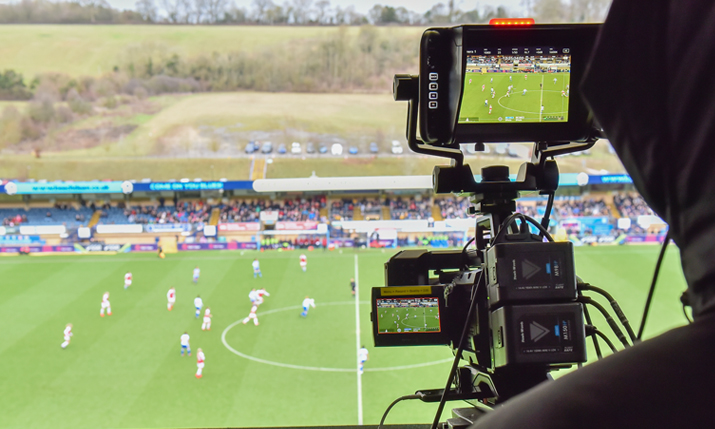Timeline TV develops remote production workflow for Women’s Super League with URSA Broadcast cameras

Timeline TV has created a bespoke remote production solution to help produce coverage of the Football Association’s Women’s Super League for the 2018-2019 season, its first as a full-time professional league.
Working around a set of unique challenges, Timeline TV came up with a remote production workflow for Whisper Films, which is producing the coverage of the competition. The solution is based on the use of Blackmagic Design’s URSA Broadcast cameras.
Timeline TV was faced with the challenge of keeping production costs as low as possible for the Women’s Super League. Managing director Dan McDonnell told SVG Europe: “The Women’s Super League wants coverage as good as any other football competition, but it doesn’t have the funds for a full OB.”
The solution was remote production, McDonnell noted: “The challenges were we wanted to get a full quality system, but at a very low cost, so we decided to do the production remotely.
“We needed to control the production from our broadcast centre in Ealing, so [the normal number of people and amount of equipment] doesn’t need to be sent out and go overnight; we just send the cameras and the cameramen,” he added.
The solution has been built around the Blackmagic 3G-SDI Arduino Shield and URSA Broadcast camera. To meet the Women’s Super League’s requirements for live match coverage in the 2018/2019 season, the Timeline team needed to rethink how it would approach a four multicamera OB that could be deployed at any ground in the country while still delivering the level of quality expected by production partner, Whisper Films.
The Blackmagic Design URSA Broadcast camera was right for this production for a number of reasons, said McDonnell. Firstly, it is a cost-effective solution. Also, it is possible to put a large studio viewfinder also from Blackmagic on the URSA Broadcast, which, “you need to do to put a big broadcast lens on [the camera] to film matches, which you can’t do with a lot of cost-effective cameras,” McDonnell noted.
The third reason, McDonnell said, is, “you can take the big lens and the viewfinder off, so you can use the camera for filming the match and then for interviews, so you don’t need two cameras”.
Finally, Blackmagic makes its protocols openly available, which has allowed Timeline to, “develop our own software to interface with the cameras so we can remotely control all the functions of the cameras across the internet from our studio in Ealing,” McDonnell concluded.
He added: “We pride ourselves on delivering broadcast quality output for our creative partners, and the URSA Broadcast, when paired with our B4 lenses, delivers excellent images, both on and off the pitch.”
On the control of the URSA Broadcast cameras, Timeline’s IP engineering team had to get creative. “Remote camera racking was essential and required a new approach to data transmission all while keeping the on site operation as simple as possible,” said McDonnell. “There was nothing else on the market that would afford us the flexibility, quality or control unless we deployed a full OB.”
Developed around the Blackmagic 3G-SDI Arduino Shield using the Blackmagic SDI camera control protocol, Timeline’s engineers have developed a H.265 based 4G bonding and IP transmission solution that resides in a backpack. It integrates a transmitter and the camera control interface systems needed for acquisition and live transmission back to the companies Ealing Studios’ headquarters, where each weekend’s coverage is produced.
“Essentially, we’ve eliminated the requirement for a full, static router, which normally is in place for a camera control unit to feed through. As well as the high-resolution camera signals, an additional low res feed is sent carrying all the necessary camera settings,” added McDonnell. “Working over IP channels provides reliable and consistent remote signal feeds from wherever we are around the country, and this, combined with Blackmagic’s open protocol has given us the flexibility to devise a high-quality remote production solution that meets broadcasters’ strict standards for live sports coverage.”
Timeline will continue to provide all Women’s Super League footage with the remote solution, yet McDonnell added that its efficiency and technical capabilities could be easily transferred to other sporting leagues, tournaments and touring events.
“The ability to control an entire multi-camera system via IP means that we can produce comprehensive coverage of high profile events from anywhere in the world, without having to send a huge amount of staff or equipment out to the venues,” McDonnell concluded. “Once the operators are on site, it’s simply a matter of switching on the receivers and the cameras, and we’re ready to go. That balance of speed, flexibility and quality has only been possible at this price point thanks to Blackmagic Design.”
Timeline’s work on the FA Women’s Super League is for the BBC.
